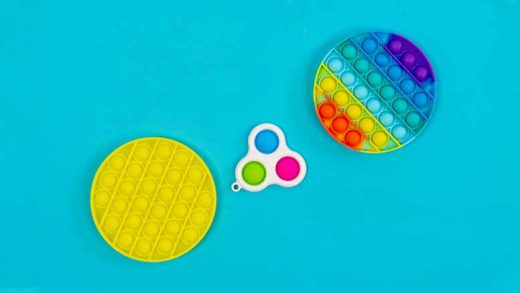Playing the timeless game of hopscotch with your preschooler is a great way to foster their social, cognitive, and physical development. It provides them with a little nostalgia. Let’s look at the fun of hopscotch and all of its advantages for young kids in this article. It is designed especially for preschoolers and covers everything from setting up the grid to hopping between the squares. Explore the world of sidewalk chalk and giggles as you learn the simple rules that make hopscotch fun.
The Hopscotch game isn’t just for amusement. It also develops problem-solving while improving balance, coordination, and gross motor skills. Let’s explore the exciting world of hopscotch with us as we hop, skip, and leap. Enjoyment meets priceless learning possibilities.
What is Hopscotch?
Hopscotch is a simple game that can be played by anyone in most outdoor places. It promotes social skills, creativity, and physical exercise. People throughout the globe play this game. This is only one of several classic outdoor activities for kids, such as scavenger hunts and hide-and-seek. These kinds of games are essential in today’s environment. They promote screen time reduction and outdoor engagement.
How to Play Hopscotch?
Preschoolers will need sidewalk chalk and a marker to play a hopscotch game. Here is a step-by-step how-to-play hopscotch guide:
- Design the Court: On the driveway or sidewalk, use the chalk to make a hopscotch court. A normal hopscotch court is a series of numbered squares laid out in a pattern. One square, two squares, another single square, and so on make up a basic pattern. You may customise the length of your hopscotch court to your liking. But most often, it includes eight to ten squares with numbers ranging from 1 to 8, 9, or 10.
- Set Rules: Ensure that everyone is aware of the rules before the game begins. Each player will bounce around the court one at a time, avoiding the spot marked with their marker. For single squares, players must hop with one foot, and for side-by-side squares, they must use two feet—one in each square.
- Start the Game: The first player puts their marker into the court to begin play. It shouldn’t bounce out or touch any lines when it lands in a square. The player then skips the square where their marker is located and jumps around the court.
- Hop through the Court: The player hops on one foot into the first empty square and every next empty square. Keep in mind that you use two feet for the side-by-side squares. Be careful! You can not cross any lines.
- Turn Around: The player turns around and hops back through the squares when they get to the last square.
- Collect the Marker: The player must stop, bend down (while remaining on one foot!), and pick up their marker when they get to the square, immediately following their marker on the way back. They then jump into the last square before leaving the court.
- Pass the Turn: The player passes their marker to the next player. The process begins again if they successfully finish the course. The player who wins will aim for the next unmarked square on the following turn.
- Winning: The game is won by the first player to finish a course for each numbered square on the court!
- Penalties: A player’s turn ends, and the marker moves to the next player if they jump on a line, miss a square, lose their balance and fall, or fail to put the marker in the right square.
Remember that the goal is to make this an enjoyable activity for children. The rules may be changed and simplified depending on the kids’ ages and skill levels. Having fun and enjoying the game is the primary goal!
Benefits of Playing Hopscotch
There are several advantages to playing hopscotch for social development and mental and physical health. Here are a few of the main advantages:
- Cognitive Development
- Gross Motor Skills
- Eye-Hand Coordination
- Bilateral Coordination
A child must play with purpose and follow a set of rules to play the game. There is a lot of brainwork happening at the same time as the physical work, which makes this game a great way to stimulate cognitive development. Learning to play would be an incredible achievement since it is not an easy task for a small kid to follow the rules of Hopscotch.
Playing Hopscotch helps develop gross motor abilities, including strength and balance. Children must train to keep their balance while hopping throughout the game, switching between hopping on two feet at once and one foot at a time. They use all of their body control to leap, hop, and pass the squares. This strengthens their core and overall strength while playing this game.
Children require hand-eye coordination to put an item in the correct square without touching the line and to be able to recover it later. This ability, which is useful in all future sports and movement activities, is skilled in this game.
This is a child’s ability to use both sides of the body together in a coordinated way. This ability is required to carry out daily duties, including eating, dressing, and chopping. It is also required for physical activities and sports, including biking, leaping, and sports learning.
There are many benefits of playing hopscotch with a preschooler. It promotes social and cognitive abilities that are important for their development and their physical development. Children learn counting, balancing, and coordination with this easy-to-learn game. It also improves their spatial awareness and problem-solving skills. Hopscotch also fosters excellent peer connections by encouraging social engagement, teamwork, and sportsmanship.
Kangaroo Kids International Preschool offers a play-based learning approach that promotes holistic development in kids. We try our best to make their preschool journey enjoyable. To learn more about our curriculum, contact us today!









